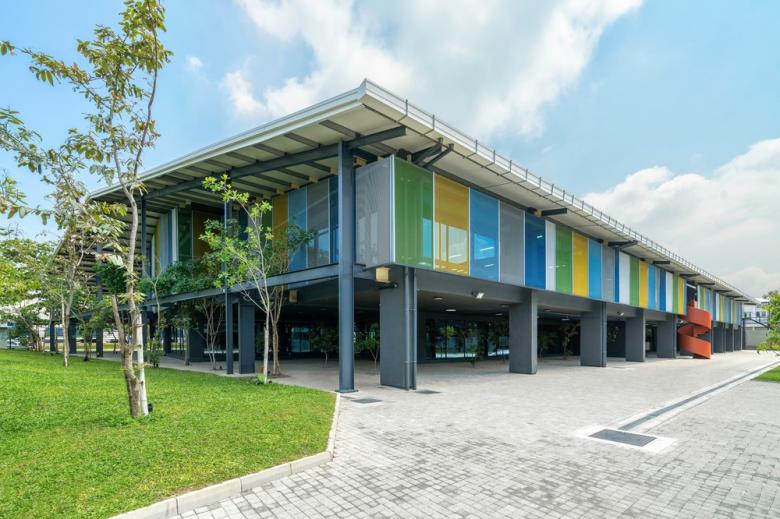Jordan Parnass Digital Architecture
Star Innovation Center
Jordan Parnass Digital Architecture
18. de setembre 2018
Photo: JPDA (All photographs courtesy of v2com)
Jordan Parnass Digital Architecture has completed the first Certified Passive House project in South Asia, proving that ultra-high-performance efficiency standards are achievable for buildings in any climate.
Project: Star Innovation Center, 2018
Client: Star Garment Group
Location: Katunayake, Sri Lanka
Certified Passive House Designer: Jordan Parnass Digital Architecture (JPDA)
Design Team: Jordan Parnass, Marijke Huelsmann, Kevin Hennessey, Yereem Park, Philip Weller, Elizabet Bereslavskaya
Lead Architect & Interior Design: Vinod Jayasinghe Associates (Pvt) Ltd (Sri Lanka)
Energy Consultants: Steven Winter Associates
Mechanical Engineering: Chandana Dalugoda Consultants
Structural Engineering: Ajith Vandebona PE
Quantity Surveying: Prasad Jasinghe, VFORM Consultants
MEP Engineering: Kosala Kamburadeniya PE
Photo: JPDA
The Star Innovation Center is a product development facility located near Colombo, Sri Lanka. Intended to be a global model for the entire garment industry, the project sets a new high bar for sustainability, energy efficiency and worker comfort.
The project is one of only two certified Passive House factory buildings in the world, and annual energy consumption will be cut by over 75% compared to a conventionally “efficient” modern industrial building.
Photo: JPDA
By choosing to renovate an obsolete building to Passive House standards, the project dramatically reduces the waste, carbon emissions and fossil fuels typically required for demolition and new construction, and promotes the client’s commitment to maintain high standards in social, environmental, ethical and safety compliance.
Photo: Ganidu Balasuriya
The Star Innovation Center is a pioneer in applying Passive House technology to a tropical monsoon climate, which features steady warm temperatures year-round but extremely high relative humidity. The majority of existing high performance buildings have been located in cool, Northern European-style climates where heating is the primary consideration.
Photo: Ganidu Balasuriya
Careful design and engineering of the building systems and enclosure ensures that workers enjoy year-round comfort in a workspace that provides abundant natural light, low humidity, filtered fresh air, and maintains temperatures near a constant 24 °C (77 °F).
Thorough testing of the airtightness and remote monitoring of the ongoing energy usage provide quantitative confirmation of the building performance, achieving projected operational cost savings for the client and vastly upgraded workplace environmental standards for the employees.
Photo: Ganidu Balasuriya
From the outset the agenda was to assemble an integrated project team including local architects, engineers, fabricators and builders to encourage technology transfer and demonstrate the feasibility of high performance building in the region.
By promoting the project’s goals and inspiring the local building industry JPDA has sought to establish a clear path to both reducing global carbon emissions and putting an end to worker “sweatshop” conditions.











